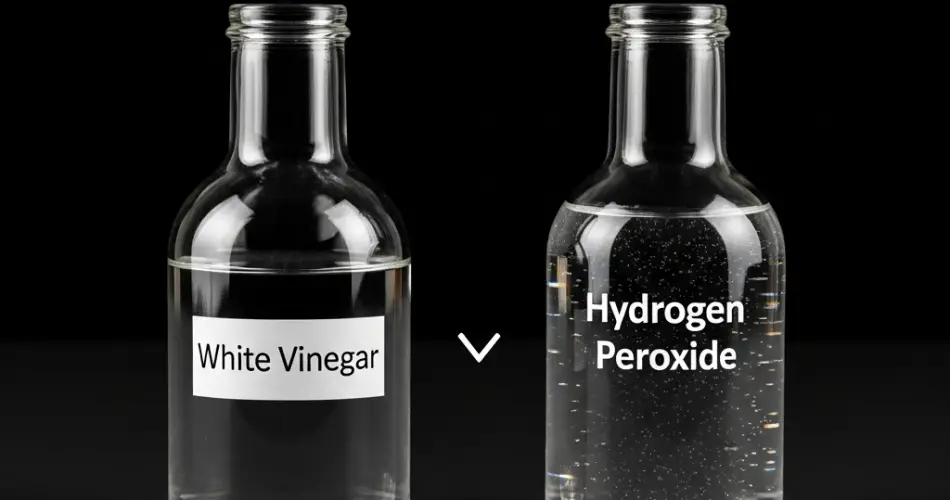Growing healthy, vigorous plants starts with strong, healthy seeds. Whether you are planting vegetables, herbs, or flowers in your urban garden or indoor pots, the first step is ensuring your seeds have the best possible chance to sprout and thrive.
Many gardeners overlook the importance of seed preparation before planting. A simple treatment with common household products like vinegar and hydrogen peroxide can dramatically improve seed germination and overall plant health. This article explains why and how to use these natural substances to boost your garden’s productivity.
Why Treat Seeds Before Planting?
Seeds can carry surface pathogens, fungal spores, or bacteria that may reduce germination rates or cause disease in young seedlings. Treating seeds with natural disinfectants like vinegar and hydrogen peroxide helps eliminate these harmful agents, resulting in stronger seedlings and healthier plants.
Additionally, seed treatment can help break down seed coats in some species, allowing water to penetrate better and promoting faster germination.
Benefits of Using Vinegar on Seeds
Vinegar, a mild acid, is a natural disinfectant that can kill many types of bacteria and fungi on the seed surface. Using vinegar on seeds can:
-
Reduce fungal infections that cause damping-off disease in seedlings.
-
Remove surface contaminants that inhibit germination.
-
Improve seed hydration by slightly softening seed coats.
It’s important to use diluted vinegar solutions to avoid damaging the seeds.
Benefits of Using Hydrogen Peroxide on Seeds
Hydrogen peroxide (H₂O₂) is widely used as a disinfectant and oxidizer. When applied to seeds, it:
-
Kills pathogens and microbes on seed surfaces.
-
Releases oxygen which can stimulate seed metabolism.
-
Helps in breaking seed dormancy by softening tough seed coats.
-
Promotes faster and more uniform germination.
Hydrogen peroxide is gentle but effective, making it a popular choice for seed treatments.
How to Prepare Vinegar and Hydrogen Peroxide Solutions for Seeds
To treat seeds properly, you’ll want to prepare diluted solutions that are safe and effective.
Vinegar Solution:
-
Mix one part white vinegar with three parts water (25% vinegar solution).
-
Stir well.
Hydrogen Peroxide Solution:
-
Use 3% hydrogen peroxide, which is commonly available in pharmacies.
-
Mix one part hydrogen peroxide with four parts water (about 0.6% solution).
How to Treat Seeds with Vinegar and Hydrogen Peroxide
Step 1: Clean Your Seeds
Remove any debris or damaged seeds and rinse them lightly in clean water.
Step 2: Vinegar Soak
Place your seeds in the diluted vinegar solution for about 5-10 minutes. This helps disinfect the seed surface and may slightly soften the seed coat.
Step 3: Rinse Thoroughly
After soaking in vinegar, rinse the seeds gently with clean water to remove any vinegar residue.
Step 4: Hydrogen Peroxide Soak
Transfer the seeds to the diluted hydrogen peroxide solution and soak for 10-15 minutes. This further disinfects seeds and boosts oxygen availability.
Step 5: Final Rinse
Rinse the seeds again in clean water.
Step 6: Dry and Plant
Spread the seeds on a paper towel or clean surface to dry slightly before planting them as usual.
What to Expect After Treatment
By treating seeds with vinegar and hydrogen peroxide, you will often see:
-
Faster germination times: Seeds absorb water more readily and begin sprouting sooner.
-
Improved germination rates: More seeds will sprout, reducing losses.
-
Healthier seedlings: Stronger, disease-free young plants.
-
Reduced risk of fungal infections: Less damping-off and other seedling diseases.
Additional Tips for Seed Success
-
Use fresh seeds for the best germination results.
-
Always sterilize your planting trays and tools.
-
Provide consistent moisture and warmth to seeds after planting.
-
Avoid overwatering, which can encourage fungal growth.
-
Keep seedlings in well-ventilated areas with adequate light.
Why This Works for Urban Gardens and Indoor Plants
In urban gardening and indoor planting, space is often limited, and environmental conditions can be less than ideal. Diseases can spread quickly in compact areas, and weak seedlings mean wasted effort.
Treating seeds with vinegar and hydrogen peroxide is a natural, affordable way to boost your success rate. It reduces the need for chemical fungicides and pesticides, making it safer for your family and the environment.
Conclusion
Applying vinegar and hydrogen peroxide to your seeds before planting is a simple but powerful technique to improve germination, reduce disease, and grow healthier plants. These common household products are accessible and easy to use, making them perfect for beginners and experienced gardeners alike.
Give this method a try with your next batch of seeds, whether in your urban garden, balcony pots, or indoor plant collection. You’ll be amazed by the difference in seed sprouting speed and seedling vigor.



